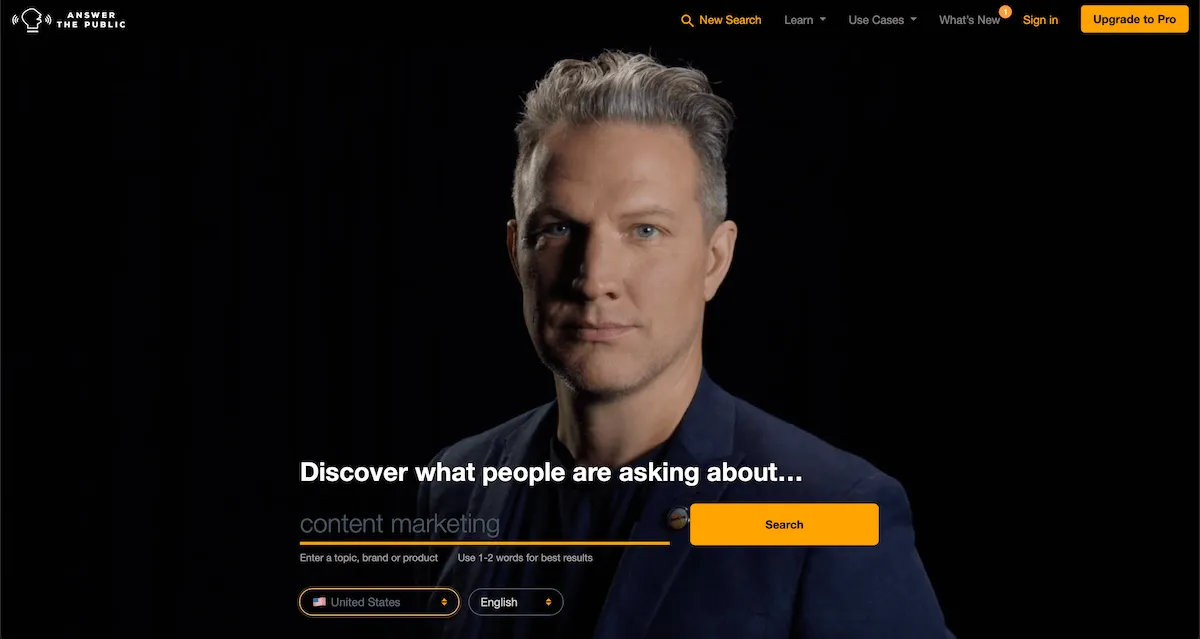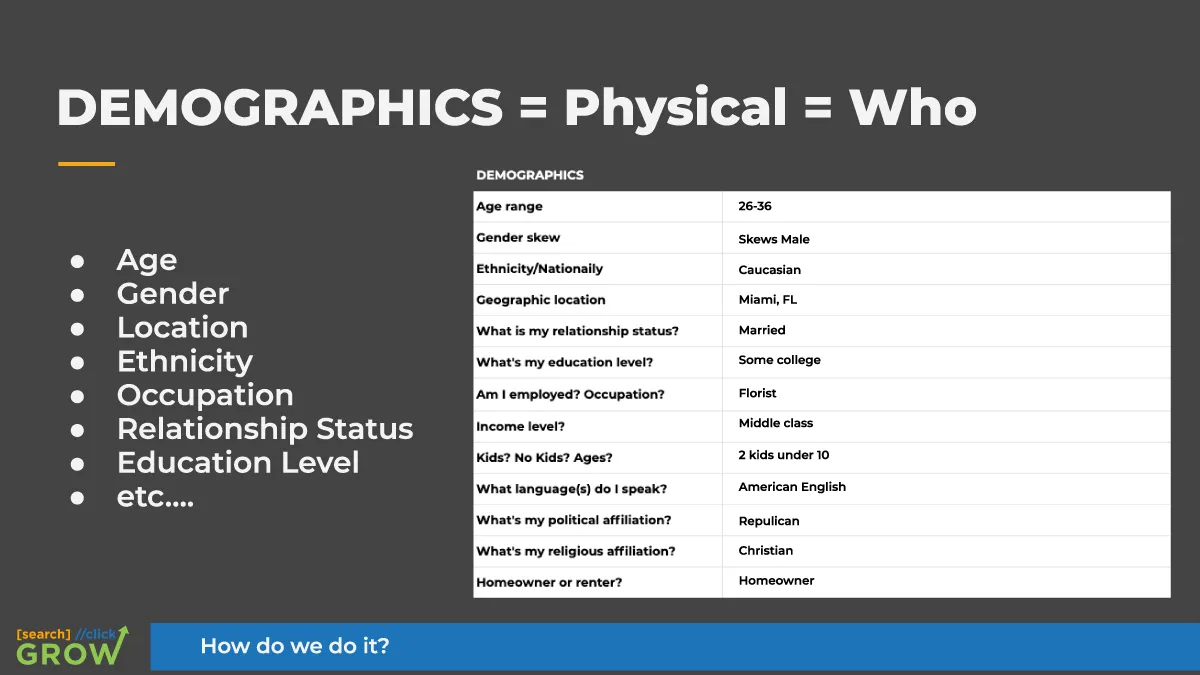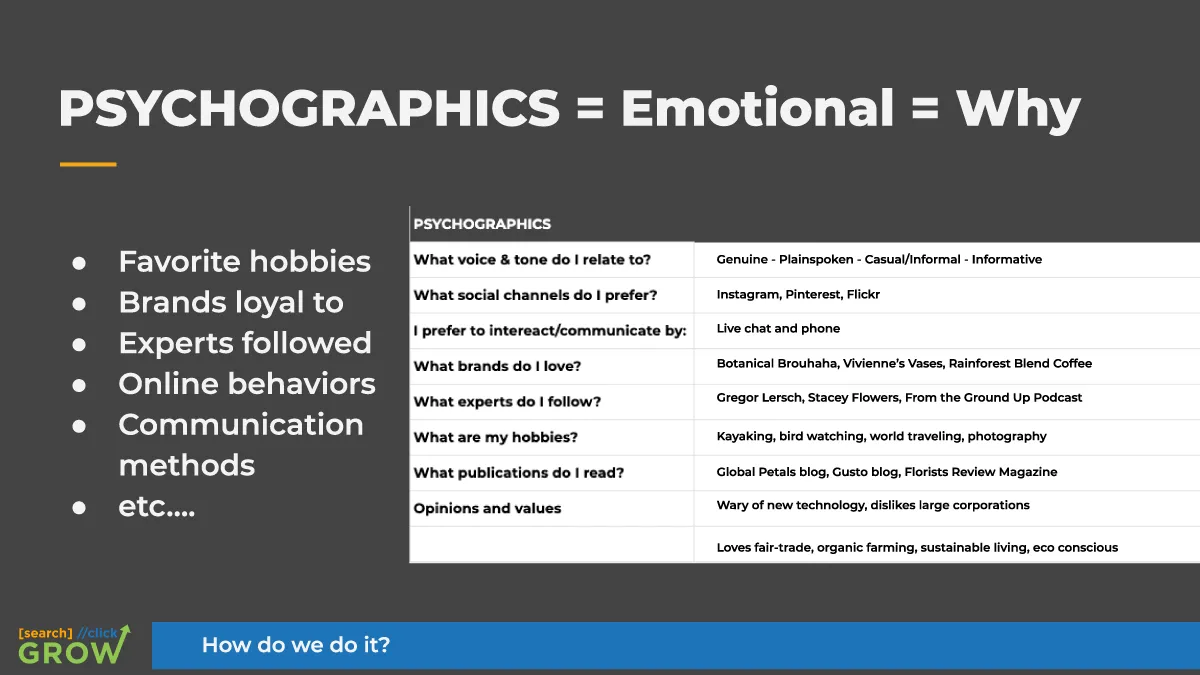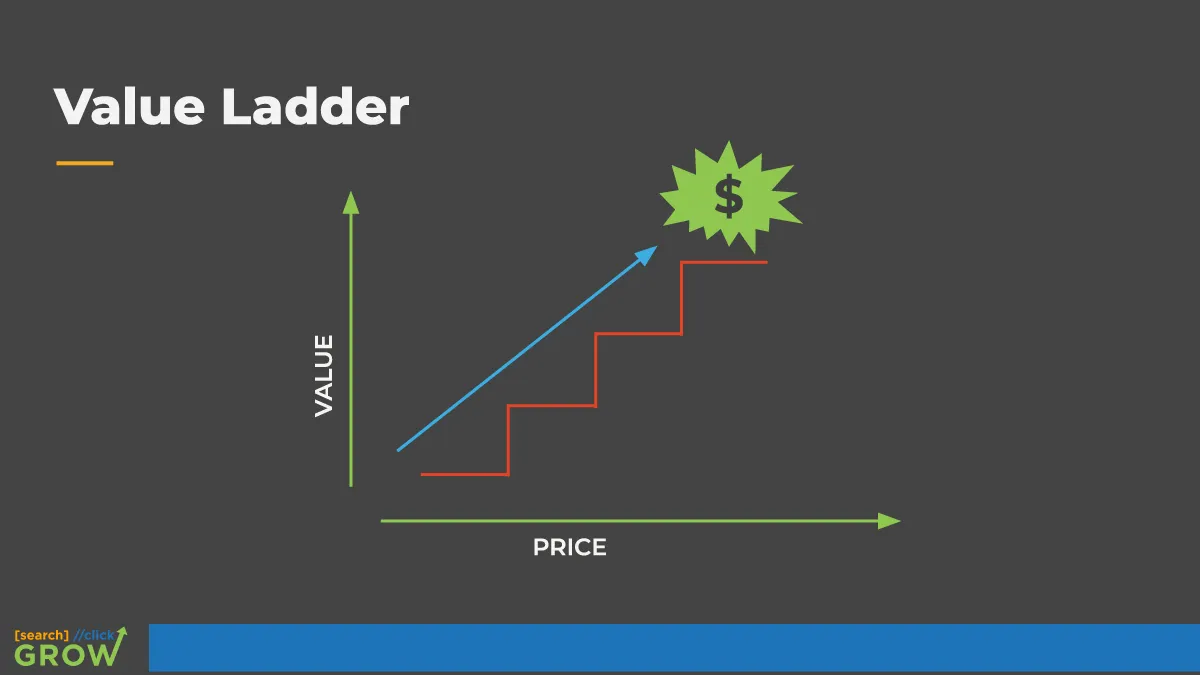04: How to Create a Content Marketing Strategy
In this chapter, we will show you how to research, target, and create value with your content marketing strategy to bring you the most ROI.
All Chapters List
Chapter 04 Overview
Content Marketing Strategy: Step-by-Step Approach
Defining a content marketing strategy seems like a cakewalk, and it could be if you have the necessary resources and content creators on your side. However, long-lasting, optimized content that continuously produces traffic and engagement needs a strategy to forge a plan and get results.
This step-by-step approach to content marketing strategy shows you how to research, target, and create value with your strategy so that it brings you the most ROI.

Competitor Research
When defining any strategy for your business, the first step is always to research.
The quickest and most productive way is to look at your market, competitors, SERPs, and social media pages to find insights about your audience and what you need to do to beat out others in your niche.
1. Define Your Market
There isn’t a small business out there that can target everyone and see good results. Even big businesses can’t do this!
That’s why it’s so important to understand your market so you can target it efficiently with your strategy and supporting campaigns.
To define your market, you’ll need to:
- Look closely at your current customers
- Study your competition and how they’re branding their products/services
- Analyze the performance of your product in comparison
- Consider price and promotions
- Compare costs to customer lifetime value and loyalty
- Perform a few searches in Google (see SERPs Research below)
- Build demographics and psychographics for your audience (see Persona Development below)
- Head to social media and look at competitors and interests of your audience, such as pages they follow (see Social Research below)
While you don’t want to break down your market too far, you do want to understand what the current trends are and how audiences consider these products.
- What are they saying in reviews?
- What keywords are your competitors using?
- What social media pages are the most followed?
- What are the underlying themes in your market?
Once you address these points and questions, you’ll know exactly how to define your market.
Example:
You’re the owner of a real estate agency that wants to market to first-time homebuyers between the ages of 28 and 35 with incomes upwards of $150,000 per year and who live in or near Atlanta, GA.
Perhaps you want to define the market down to new construction home interest or specific locations around Atlanta, and maybe you want to tap small families looking for starter homes.
You now have a clearly defined audience to base your strategy upon. This is important to understand what content to develop so that it speaks directly to the customers you want the most.
2. Analyze Top Competitors
Before looking at competitor pages and promotions, it’s best to write down a few ideas of your own based on the research above. Next, you can compare your ideas and findings to your competitors. What are they doing with content to attract customers in your market?
You may want to look at more than just their homepage:
- Google competitor brands to check out positions, reviews, and top indexed pages
- Use a tool like Keywords Everywhere to analyze keywords on your competitor’s pages
- Check out their social media profiles for content and customer engagement. Do audiences like what they post?
- How often is your competitor posting content?
- What’s their company blog like? Do they share on Facebook, Twitter, Instagram, and LinkedIn?
- Using Facebook Insights or another social media analysis tool, see your competitor’s top posts and engagement.
SEMrush, SocialReport.com, and Mention are all incredible tools to use for competitor research, but not all are free. These tools can provide some data to help fine-tune your strategy.
3. SERPs Research
SERPs research aka SERPS analysis is a tactical approach to learning what is ranking highest in your market. You can search different keywords based on a keyword report generated from Google Keywords Planner or another keyword research tool.

It’s also a good idea to use a tool like AnserthePublic.com to find questions about the topics you want to rank for, then google those to see the top results.
- What do these results have in common?
- What keywords are the most popular?
- Which pages on your site are ranking highly in search?
- What keywords do you want to rank higher for?
- What keywords do your competitors rank highly for?
- Look at your competitor’s pages and determine strengths, weaknesses, opportunities, and threats
- Use tools like SERPChecker or SEMrush to get more metrics
Once you know what content you’re trying to beat and what keywords really matter for your brand, you’ll have a more sound content strategy that can outrank your competitors.
4. Social Research
In today’s world, you cannot ignore social media. Why? Because social media users will find your business and probably write about it anyway.
The best way to share content is through social media, so you’ll need to have different profiles set up to reach your target audience.
Before setting up new profiles or updating anything, you should look at the following as part of your social research step:
- Determine the best social media platforms for your market: Facebook, Instagram, Twitter, Pinterest, LinkedIn, Medium, Snapchat, TikTok, and YouTube are a few to start with.
- If already on social media, use analytics tools like Facebook Insights, Instagram Analytics, Twitter Analytics (and so forth) to research your page’s performance
- Think about your audience and where they live online, where do they chat and share information?
- Analyze competitor pages on social media platforms
- Look at Facebook Groups, Twitter Lists, Pinterest Boards, Instagram hashtag communities, and LinkedIn Groups for the latest trends and posts
- Check post frequency, types of content, captions, brand voice, followers, and engagement
- What are the top posts about in your market on social media?
- What are influencers posting about? What brands do they follow?
- How does your audience interact in comments?
There are many other valuable insights on social media, but the best way to really understand what people are looking for is to check top posts and look in the comments.
- What are people saying about the brand, product, service, or influencer pushing the products?
- What is the sentiment?
- How can you answer for any problems or friction that you find?
Social media is a great way to publish content and earn more brand awareness, which is why you should check post frequency and types of content that they respond to the most.
Persona Development
When developing personas, you are looking at the people most likely to buy your products. However, you also want to look at the propensity to buy, which is a purchasing behavior metric you can target with Facebook Ad Manager.
Persona development is important for targeting, but it’s also going to help with positioning your content strategy and activating interest in new customers, influencers, and returning customers.
Perhaps the best place to start is your customer relationship management (CRM) tool and analyze the data to create the top 3 customer personas, then send out a survey via email with a discount.
Here are some other ways to get more information:

1. Survey Your Ideal Persona
As stated, you should survey your current customers via an email marketing series to get started.
This services two purposes:
- You collect data on people who have already bought your products
- You can offer a discount to complete the survey and create a promotion at the same time
You also want to use a tool like SurveyMonkey or Qualtrics to question your ideal persona. To do that, you’ll need to know the demographics and psychographics that create this persona who consistently comes back to your brand for more.
2. Demographics
Who needs your product and why? This is the simplest way to get started on your ideal buyer personas. You also want to understand who is the most likely to buy it and why? Do they purchase because it’s the highest quality or because it’s cheap?
Here are also demographic factors to add to your personal profiles:
- Age
- Location
- Income Level
- Gender
- Education Level
- Relationship status
- Employment title or occupation
- Ethnicity
These demographics can tell you a lot about a person, but looking into Facebook’s targeting factors, you‘ll see a lot of distracting opportunities to target: such as pages liked or whether they’re homeowners. Instead of going too far into analysis, stick to the demographics that matter for your business.
After determining the most important demographics and building out your personas a little bit, you’ll also want to look at the personal characteristics of your optimal buyer.

3. Psychographics
Demographics are more outward or public characteristics, while psychographics are more internal including purchasing behaviors, lifestyle decisions, interests, values, and personality quirks.
These are the things that will help you understand the target’s lifestyle and how to write in a way that attracts their attention.
Here are some questions you should think about:
- How will your product or service best suit this persona’s needs?
- When and how often will use this product?
- What features appeal to your target the most?
- Where does your audience go for news and information?
- Does your target read books or look at news sites?
- Do they attend events? If so, which ones?
You can dig farther into demographics and psychographics by also considering who does not want your product.
What people in your crowd would not purchase and why? Is it a branding issue? If so, you may want to tweak your brand just slightly if possible to appeal to these difficult crowds.
As you build your content strategy, you’ll think about the answers to these surveys and what your target audience wanted.


Create a Value Ladder
Here is where you put all of your research, data, metrics, and buyer personas together for a magnificent content strategy. The main purpose of value ladders is to attract multiple customers with different incomes and levels of purchasing power.
Naturally, you’ll have products at different price ranges that will help you define different stages and offers in your value ladder.
What is a Value Ladder
A value ladder is when you combine multiple offers that increase in price (and value) in order to meet people wherever they are in the customer journey.
One offer in the awareness phase may be a free gift or small discount for a first-time purchase, but your subsequent offers would increase in value and price.

Value ladders may also be called sales funnels, but it’s not always about getting as much as you can out of a potential customer.
Your main goal should be to attract and keep customers happy. Profit is secondary so long as your customers provide lifetime value to your brand.
Ultimately, value ladders were made to build more trust and brand loyalty with your customers.
A basic value ladder works as follows:
- Free offer is shown to capture interest
- Intro offer sent to email or as part of remarketing
- Lead offer now available with a higher price and more value
- Final offer with the highest price and most value now available
For example:
Your business puts out a landing page with a free e-book that they can download for signing up, providing their name and email address. Now you are bringing people to your site for something free, and they’ve provided an email address where you can follow up with an intro offer. Finally, they see the value of your best offer because you’ve shown them how each offer has more value than the next.
As you can see, the value ladder increases in value and price, shaping up for a final offer that will have the most value and provide the most for the money.
1. Define Your Site’s MDA (most desired action)
While you probably know that not all customers who see your offer will sign up automatically, the value ladder is designed to create more purchasing confidence for your customers.
Before planning out your value ladder, you must think about your site’s MDA. This is the action that you wish every customer would take when visiting your store, perhaps it’s placing an order or maybe it’s scheduling a consultation. The goal of any website and its content should be to support your MDA.
Some example MDA’s may:
- Build more traffic (general)
- Build page traffic
- Get more sales
- Bring back customers
- Start a customer loyalty program
- Sign up more customers for email
It’s important to write down and define your MDAs so that everyone on your team knows what content to include and accomplish your goals. Furthermore, it’s always a good idea to bring in executive stakeholders who may have more goals based on sales and ROAS.
2. Outline What You Need to Get There
Outlines are helpful with any content strategy. You want to know that the content you’re planning is going to work for your business, but what do you need and who will be in charge? This is where a great outline comes in.
Here are a few things to answer with your outline:
- Create an outline in Google Docs so you can collaborate and share it with your team
- Define MDA at the top of your outline as well as any other business goals you want to achieve
- Determine how many stages you’ll need: 2 to 5 offers to create the most value
- After each offer, propose what main content pages and posts would support it
- Write under each post and page what you need, such as images, charts, interviews, client testimonials, landing page designs, and other notes that will make it more successful
- Include any email marketing series that goes along with your value ladder
It’s important to note that not all ladders need 5 stages or even 4 stages. Your value ladder could only have 2 or 3 stages depending on the value you want to create.
Five is the most popular number because it allows you to gradually move your customer up to the highest value.
3. Write Your Value Ladder
Creating a value ladder is the perfect strategy for content that sells, but it will also generate new awareness and traffic for your brand.
As you write out your value ladder stages, keep in mind what your audience is looking for based on your research and consider demographics, particularly income and interests. This is most important to increasing your customer lifetime value and ensuring that your profits continue to grow.
Note: Your first offer should be irresistible and must not be a free consultation or sales meeting. This is a red flag to visitors and potential prospects just checking out what you have to offer.
Here is an example of a completed value ladder for an interior decorator service:
Quick Overview
- Free eBook by expert interior decorator
- Discounted first-time service offer
- Update a single room for discounted room
- Completely customized home makeover or new home transition
- Full home makeover plus furniture movers and junk removal services
Types of content needed to support:
- Blog content with sidebar for sign-up and free offer
- Social media content to link to a free offer
- A landing page with a sign-up form and “Download Free eBook” CTA button
- Interesting visuals that show off your exquisite style appealing to the target’s need for an expert designer and decorator
- Email series to send free eBook and start lead nurture for value ladder
- Copy that expresses the value of free eBook as a definitive, expert guide that will show them how them the ins and outs of interior decorating
- Email should include links to blog posts on interior decorating that provide more details
First Offer: Free eBook: Guide to Interior Decorating in 2020
Usually, the first offer should be something that the prospect would normally have to pay for, but this time they are getting the information, product sample, or another item for free. This strategy offers a ton of value to the prospect because they can see how your business works and gain some insights.
Second Offer: Free E-Book + 20% Off First-Time Service
Now you are targeting new customers who want to decorate a new home and need your services.
They can read your book, but if they want the best expert on the planet to pick out furniture, wall decor, and style it with a modern, futuristic twist -- they also have 20% off any service. You can follow up with a link to your packages and include the 20% off on the landing page.
Third Offer: Update a Single Room for X Price
Perhaps you want the potential customer to simply try your services with a price point that makes sense. Interior decorators may only revamp a single room or assist with a partial remodel. Here’s an opportunity to offer that price in your third offer.
Fourth Offer: Customize Your Space with Complete Home Makeover
This is your best value yet. You offer a complete home makeover for the right price that’s just slightly more (or even a lot more) than the third offer for the single room decorating package.
This one includes a dedicated interior designer, multiple ideas and design concepts, multiple revisions, high-quality brands, layout visualization, and custom floor plans.
Fifth Offer: The Premium Home Makeover Bundle (with Furniture Movers + Junk Removal)
This last offer is the ultimate value and includes everything in the previous offer, but now you’ve added more options for the customer to think about. This gives you an opportunity to sell your biggest offer that costs the most but it has absolutely everything that your customer needs.
They can take care of designing, decorating, furniture moving, and junk removal at the same time with the same company. That’s an amazing value and benefits your target customer.



